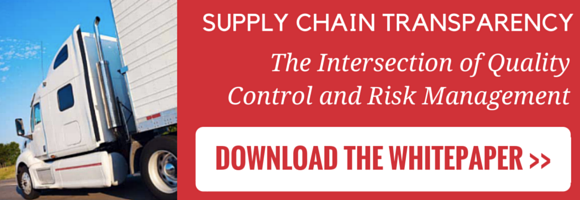
Technology has revolutionized the growing, harvesting and packaging of food products, but too often, supply chain partners treat this as a one-way benefit. In fact, gathering data to analyze and use as a forecasting tool is one of best methods for improving procurement from a retailer's perspective. Food technology can be structured to convey considerably more information than mere stock shortages. It can become a mini SWOT-style analysis for what you're doing right — and help pinpoint areas that could use a little improvement.
Don't Be Short-Sighted
Sales usually run for a week. Some delivery trucks come once a week. Most shoppers return a week after their first visit. With this short timeframe seemingly appearing everywhere, it makes sense to consider procurement in the same scope, but that could be a very costly mistake. Instead, Nicki Perrott of CIPS.org encourages procurement specialists to take a broader, more forward-looking approach to forecasting. Even if sales are flagging, don't get discouraged and promo-happy lest you end up throwing away good money after bad. Use your report-oriented technology — loyalty cards, in-store traffic sensors and so on — to sift through data to determine the busiest days and time periods to feature or hype a given product line. Order backstock product to have enough on hand for small rushes, but avoid keeping only one or two of a certain sku on hand, if possible. Nothing kills buyer momentum like an out-of-stock sign.
Put Your Best Product Forward
Even companies with a huge amount of marketing savvy can fall short when their product hits the market. This happens because no matter how diligently factories work to produce a sku that's well-presented and securely packaged. Lackadaisical refrigeration practices on the retailer side can turn good product bad. Properly transparent food technology, such as display and sales case temperature readings, help build accountability and trust between a supplier, their transporter and, ultimately, the end consumer. Make sure you communicate, and communicate often, with each node along your supply chain to ensure that your products are in the right hands. If your suppliers are sounding more and more like an endless loop of emails and voicemails, don't be afraid to be assertive.
Well-Placed Technology Equals Easy Upgrades
If you've been resisting important industry tools like the Internet of Things, it's time to consider not just the detriments or obvious benefits, but the hidden benefits as well. Initiatives such as "shop at home" programs, which allow people to place a grocery order online, are becoming very popular. While indexing all of your stock to ensure compatibility with these systems is important, it's a difficult, uphill series of tasks. Don't do twice the work when it comes to tidying up your digital footprint — fix, adjust or eliminate redundancies as you go along.
Leave No Stone Unturned
Much like all other technology, if you don't know how to fearlessly navigate the food tech within the procurement sphere, you'll quickly find yourself drowning in instructions that are unclear or confusing. Take as much time as you need before implementation to familiarize yourself with the reports, tips and suggestions. Learning on the fly won't do when it comes to technology. Intesources' Brian Miller explains that clear insight is critical when it comes to keeping the supply chain humming along. That means the impetus is not only on your supplier, but on your team as well. If there are stocking, fulfillment or product problems, either current or potential, don't wait until they get worse before asking for help and/or an impartial assessment.
Food technology is an excellent route towards optimizing your supply chain, but only when used wisely. Be sure you're listening to data-collection components and algorithms, as well as the people that help drive your food supply train. Your food is only as good as the time it takes in transit, the care with which it's handled and — where applicable — proper refrigeration techniques. With technology made for the food industry, you'll be well-placed to dominate the competition.






